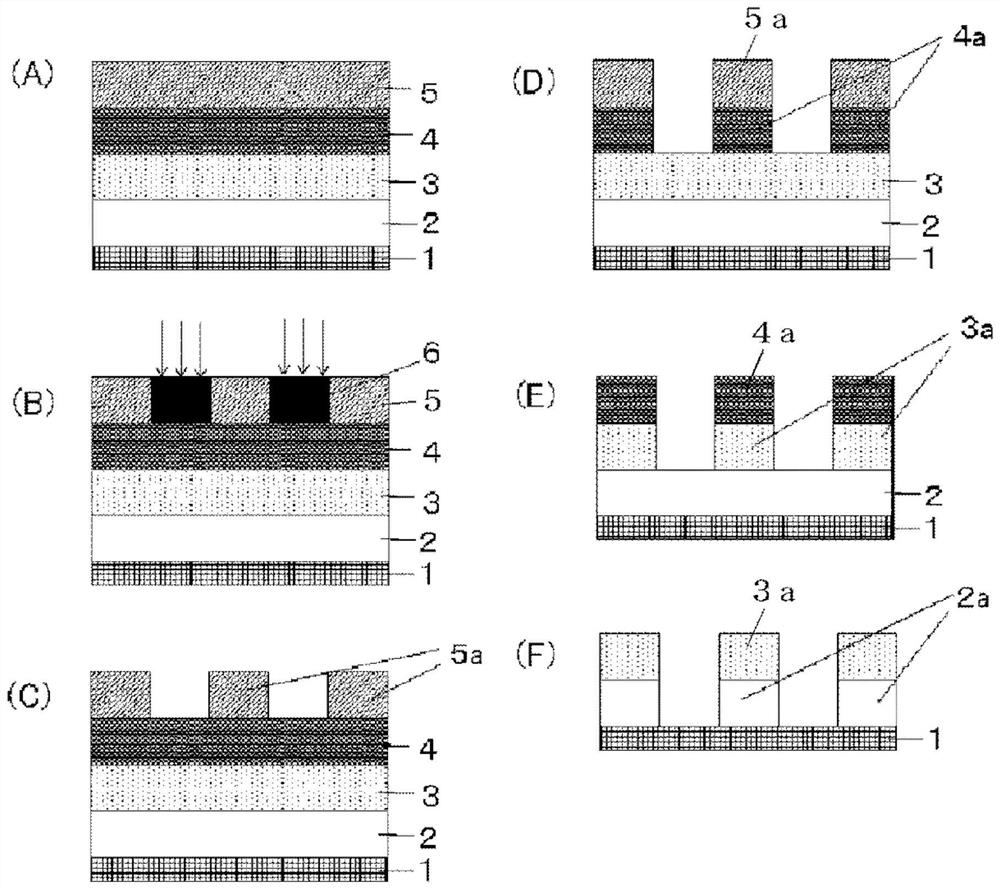Material for forming organic film, substrate for manufacturing semiconductor apparatus, method for forming organic film, and patterning process
A technology of organic film and organic group, which is applied in the field of organic film forming materials, can solve the problems of unsatisfactory landfill characteristics and planarization characteristics, and achieve the effects of excellent adhesion, good yield, and good yield
- Summary
- Abstract
- Description
- Claims
- Application Information
AI Technical Summary
Problems solved by technology
Method used
Image
Examples
Embodiment
[0277] Hereinafter, the present invention will be described in more detail by showing synthesis examples, comparative synthesis examples, examples, and comparative examples, but the present invention is not limited thereto. In addition, regarding the molecular weight and the degree of dispersion, the weight average molecular weight (Mw) and the number average molecular weight (Mn) in terms of polystyrene by gel permeation chromatography (GPC) using tetrahydrofuran as an eluent were obtained. , and obtain the degree of dispersion (Mw / Mn).
[0278] [Synthesis example of polymer for organic film-forming material]
[0279] The following tetracarboxylic anhydrides (B1) to (B6) and diamine compounds (C1) to (C6) were used as terminal blocking agents in the synthesis of the polymers (A1) to (A16) for organic film-forming materials. The aniline derivatives and phthalic anhydride derivatives (D1) to (D5). A 60:40 mixture of isomers was used for (C3).
[0280] Tetracarboxylic anhyd...
Synthetic example 1
[0289] [Synthesis example 1] Synthesis of polymer (A1)
[0290] 120 g of NMP (N-methyl-2-pyrrolidone) was added to 15.55 g of tetracarboxylic anhydride (B1) and 14.62 g of diamine compound (C1), and the reaction was carried out at an inner temperature of 40° C. for 3 hours under a nitrogen atmosphere. 5.16 g of terminal blocking agents (D1) were added to the obtained polyamic acid intermediate solution, and the reaction was further performed at an internal temperature of 40°C for 3 hours to obtain a polyimide precursor solution. To the obtained reaction liquid, 4.00 g of pyridine was added, and 12.25 g of acetic anhydride was gradually added dropwise, and then the reaction was carried out at an internal temperature of 60° C. for 4 hours to carry out imidization. After the reaction was completed, it was cooled to room temperature, 400 g of methyl isobutyl ketone was added, the organic layer was washed twice with 100 g of a 3% nitric acid aqueous solution, and then washed 6 time...
Synthetic example 2~16
[0295] [Synthesis Examples 2 to 16] Synthesis of Polymers (A2) to (A16)
[0296] The polymers (A2) to (A16) shown in Table 1 were obtained under the same reaction conditions as in Synthesis Example 1, except that the diamine compound, tetracarboxylic anhydride, and terminal blocking agent shown in Table 1 were used. as a product. The weight average molecular weight (Mw) and the degree of dispersion (Mw / Mn) of these polymers were obtained, as shown in Table 2.
[0297] [Table 1]
[0298]
[0299] The following compounds (E1) to (E5) and the aforementioned tetracarboxylic anhydride ( B4), (B5), diamine compounds (C2), (C3), and terminal blocking agents (D3), (D5).
[0300] [Chemical 42]
[0301]
PUM
| Property | Measurement | Unit |
|---|---|---|
| boiling point | aaaaa | aaaaa |
| height | aaaaa | aaaaa |
| wavelength | aaaaa | aaaaa |
Abstract
Description
Claims
Application Information
 Login to View More
Login to View More - R&D
- Intellectual Property
- Life Sciences
- Materials
- Tech Scout
- Unparalleled Data Quality
- Higher Quality Content
- 60% Fewer Hallucinations
Browse by: Latest US Patents, China's latest patents, Technical Efficacy Thesaurus, Application Domain, Technology Topic, Popular Technical Reports.
© 2025 PatSnap. All rights reserved.Legal|Privacy policy|Modern Slavery Act Transparency Statement|Sitemap|About US| Contact US: help@patsnap.com



